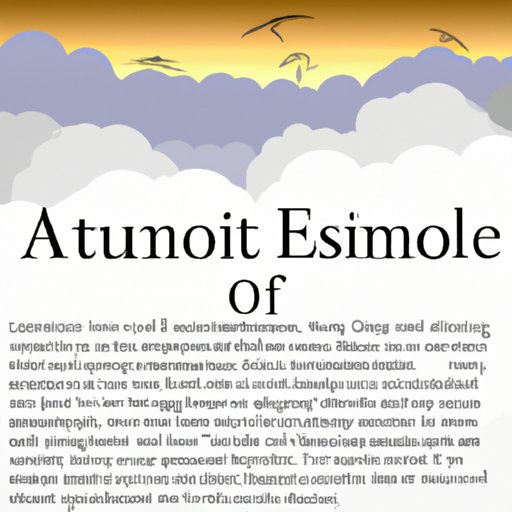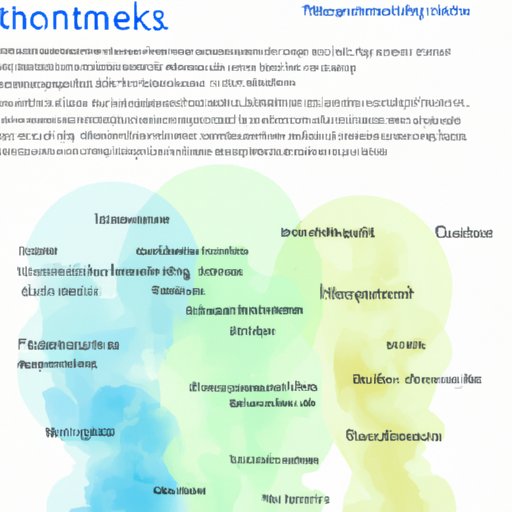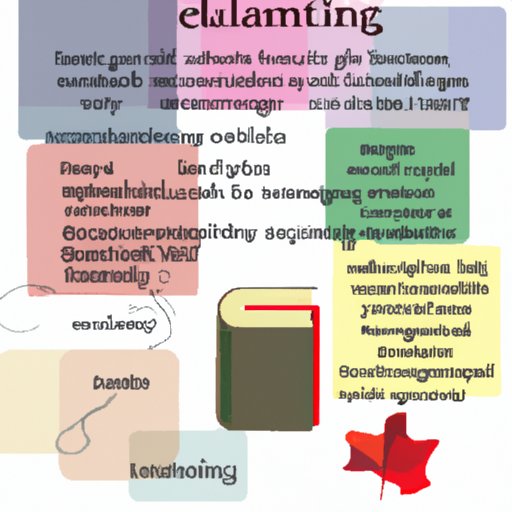Introduction
Atmosphere in literature refers to the mood or feeling created by a work of writing. It can be used as a tool to evoke emotion in readers or to set the tone for a story. The atmosphere of a piece of literature can be influenced by the setting, characters, and other elements such as descriptive language and symbolism. In this article, we will explore what atmosphere is in literature, how it is created, and its impact on character development.

Exploring the Role of Atmosphere in Literature
What is atmosphere? According to literary theorists, atmosphere is a “mood or feeling created by a work of literature, which can be conveyed through setting and characters.” This means that the atmosphere of a story or poem can be determined by the setting, characters, dialogue, and other elements of the narrative.
How does atmosphere affect readers? Atmosphere can affect readers in many ways. It can evoke emotions such as fear, sadness, joy, or excitement. It can also influence how readers perceive characters and plot points. For example, if a story has a dark and oppressive atmosphere, readers may interpret events differently than if the atmosphere were more lighthearted and humorous.
Examples of how atmosphere works in literature: One example of how atmosphere works in literature is found in William Shakespeare’s Macbeth. The play begins with a sense of foreboding and dread, which is reinforced throughout the play by the use of dark imagery, violent scenes, and gloomy settings. By the end of the play, readers are left with a feeling of despair and hopelessness. Another example is found in Charlotte Bronte’s Jane Eyre. The novel begins with a somber and oppressive atmosphere, but as the story progresses, the atmosphere becomes lighter and more hopeful, reflecting the growth of the protagonist.

Creating an Atmospheric Setting in Fiction Writing
Choosing a setting that reflects the atmosphere: When creating an atmospheric setting, it’s important to choose a location that reflects the desired atmosphere. For example, if the story is meant to have a dark and oppressive atmosphere, then a grimy urban cityscape might be a good choice. On the other hand, if the story is meant to evoke feelings of joy and wonder, then a bright and sunny countryside might be more appropriate.
Using descriptive language to create atmosphere: Descriptive language can be used to paint a vivid picture of the setting and evoke certain emotions in readers. For example, if the story takes place in a forest, the author can describe the trees as “towering sentinels” or the sky as “a canopy of stars.” These descriptions can help create an atmosphere of mystery and awe.
Utilizing symbolism and other literary devices to create atmosphere: Symbols and other literary devices can also be used to create atmosphere. For example, if the story is meant to evoke feelings of fear and suspense, the author might use metaphors and similes to describe the setting in a menacing way. For example, they might describe the shadows as “slinking predators” or the darkness as “an inky void.”
Using Literary Devices to Create an Atmosphere
Personification: Personification is a literary device in which human qualities are given to non-human objects or beings. This can be used to create an atmosphere of fear or dread. For example, a writer might describe the wind as “whispering secrets” or the trees as “reaching out to grab” someone.
Metaphors: Metaphors are comparisons between two unlike things that have something in common. They can be used to create an atmosphere of mystery or suspense. For example, a writer might describe a dark forest as “a labyrinth of secrets” or a stormy sea as “a raging beast.”
Similes: Similes are similar to metaphors, except they use the words “like” or “as” to make the comparison. They can be used to create an atmosphere of fear or danger. For example, a writer might describe a thunderstorm as “roaring like a lion” or a haunted house as “creeping like a spider.”
Imagery: Imagery is the use of vivid and descriptive language to create mental images in readers’ minds. It can be used to create an atmosphere of fear, tension, or mystery. For example, a writer might describe a graveyard as “a sea of headstones” or a ghostly figure as “gliding silently across the room.”
Examining the Use of Description to Develop Atmosphere in Literature
Showing vs. telling: It’s important to remember that description should be used to show rather than tell. Instead of simply stating that a character is feeling scared, the author should use descriptive language to evoke a feeling of fear in the reader. For example, instead of saying “he was scared,” the author might say “his heart raced as he looked around the dark room.”
Using sensory details to evoke emotion: Sensory details can be used to evoke emotion in readers. For example, if the story is meant to evoke a feeling of fear, the author might use details such as the sound of creaking floorboards or the smell of musty air to create a spooky atmosphere.
Using vivid descriptions to set the scene: Vivid descriptions can be used to set the scene and create atmosphere. For example, if the story is set in a forest, the author might describe the trees as “gnarled giants” or the leaves as “rustling like whispers.” These descriptions can help create an atmosphere of mystery and awe.

How to Use Mood and Tone in Writing to Create Atmosphere
Defining mood and tone: Mood and tone are two different aspects of atmosphere. Mood is the overall emotional feeling of a piece of writing, while tone is the attitude or perspective of the writer. For example, a story with a dark and mysterious mood might have a sarcastic or mocking tone.
Examples of mood and tone in literature: One example of mood and tone in literature is found in Edgar Allan Poe’s “The Raven.” The poem has a dark and mournful mood, which is reinforced by the narrator’s sorrowful tone. Another example is found in J.K. Rowling’s Harry Potter series. The books have a light and adventurous mood, which is reflected in the upbeat and humorous tone of the characters.
Using mood and tone to create atmosphere: Mood and tone can be used to create atmosphere in literature. For example, a story with a dark and sinister mood might use a menacing tone to reinforce the atmosphere. On the other hand, a story with a light and whimsical mood might use a humorous tone to create a playful atmosphere.

Analyzing Different Types of Atmospheres in Literary Works
Suspenseful atmosphere: Suspenseful atmospheres can be created by using descriptions of darkness, fear, and uncertainty. Writers can also use symbols such as locked doors or mysterious figures to create a sense of anticipation.
Tense atmosphere: Tense atmospheres can be created by using descriptions of danger, confusion, and chaos. Writers can also use symbols such as ticking clocks or broken mirrors to create a sense of unease.
Mysterious atmosphere: Mysterious atmospheres can be created by using descriptions of secrets, mysteries, and puzzles. Writers can also use symbols such as hidden passages or unsolved riddles to create a feeling of intrigue.
The Impact of Atmosphere on Character Development in Literature
Establishing character traits through atmosphere: Atmosphere can be used to establish character traits and relationships between characters. For example, a dark and oppressive atmosphere might indicate that a character is feeling anxious or fearful, while a light and cheerful atmosphere might suggest that a character is feeling happy and carefree.
Using atmosphere to build relationships between characters: Atmosphere can also be used to build relationships between characters. For example, a tense and suspenseful atmosphere might indicate that two characters have a strained relationship, while a peaceful and tranquil atmosphere might suggest that two characters have a close bond.
Examples of how atmosphere impacts character development: One example of how atmosphere impacts character development is found in Jane Austen’s Pride and Prejudice. The novel begins with a tense and oppressive atmosphere, which reflects the strained relationship between Elizabeth and Mr. Darcy. As the story progresses and their relationship develops, the atmosphere gradually becomes lighter and more inviting, reflecting the growing connection between the two characters.
Conclusion
In conclusion, atmosphere is an important element of literature that can be used to evoke emotion in readers and influence how they interpret the story. It can be created through the setting, characters, descriptive language, and other literary devices such as symbols and metaphors. Atmosphere can also be used to establish character traits and build relationships between characters. By understanding how atmosphere works in literature, writers can create compelling stories that leave readers with a lasting impression.
(Note: Is this article not meeting your expectations? Do you have knowledge or insights to share? Unlock new opportunities and expand your reach by joining our authors team. Click Registration to join us and share your expertise with our readers.)
